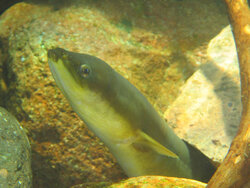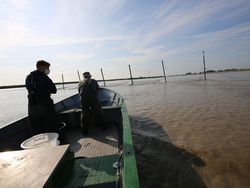Dossier
Biodiversity and migratory species
Reinhold Hanel | 20.06.2022
Fish species that migrate between fresh and marine waters, so-called diadromous species, are often particularly vulnerable to human impacts. They are put under pressure by river constructions and fragmentation of habitats as well as by over-fishing and climate change.
Of the existing 33,000 fish species about 7,000 are used for human consumption, and the trend is upwards. Fish species often vary only in a few characteristics, with the result that they are often only distinguishable by experts. Nonetheless, when aspiring high product quality and consumer protection, as well as a back-tracking of fish and fish products for stock protection, a definite identification of fishes and a confirmation of their origin is required.
Controls are also needed for processed fish products, such as filets and tinned fish: fake labelling must cease. At the Thünen Institute we have expertise in fish identification, laboratory analytics and fish genetics. We develop genetic markers for species identification and for stock separation of important model species. These include sprat and herring as well as icefish and tuna. Of particular interest and great importance are migratory species. Many fish species make long and exhausting migrations to reach spawning grounds and find feeding areas, and some of them cover enormous distances and large obstacles. Fish species that migrate between fresh and marine waters, so-called diadromous species, are often particularly vulnerable to human impacts. They are put under pressure by river constructions and fragmentation of habitats as well as by over-fishing and climate change.

![[Translate to English:] Meerforelle im LaichkleidSea trout in spawning dress](/media/_processed_/2/6/csm_Meerforelle_im_Laichkleid_ed191f3197.png)


![[Translate to English:] Episode 14: Can the eel still be saved?](/media/_processed_/d/e/csm_Foto_Folge14_neu_dc6eef143f.jpg)
![[Translate to English:] Logo des Bundesministerium für Ernährung und Landwirtschaft](/media/allgemein/logos/BMEL_Logo.svg)